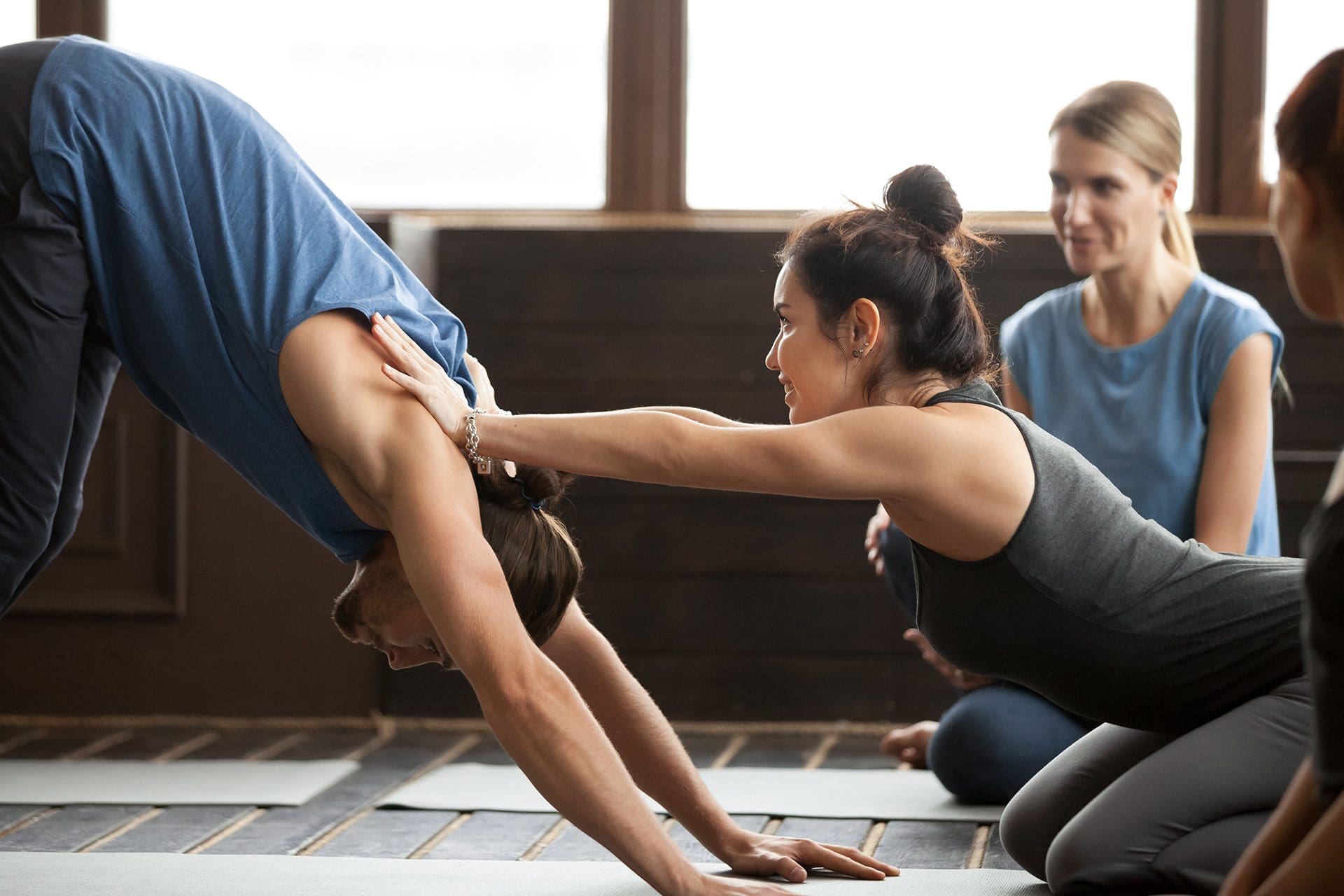Teachers, It’s Time to Adjust Our Hands-On Adjustments
How do you correct a posture? How do you tell students their shoulders need to roll back or knees should not bend? Is it by taking a hands-off approach where you simply repeat instructions without pointing out where the practitioner is going wrong? Or, is it by safely and confidently correcting alignment to help students not only achieve the right posture but build muscle memory and go deeper? A Yoga Adjustment TTC will methodically take you through how to take a hands-on approach to adjustments without tipping over to inappropriate or invasive.
Furthermore, taking a hand-on approach can come with the risk of injury. It is, therefore, necessary, to understand the right techniques and how much is too much. That’s why considering an Online Yoga Alignment TTC is helpful in learning how to do this and where to draw the line.

HERE ARE A FEW GUIDELINES TO KEEP IN MIND WHEN TAKING A HAND-ON APPROACH TO ADJUSTMENTS:
- Ask before adjusting: Some students may not be comfortable with a hands-on approach. It’s always best to ask before attempting to make adjustments. Get consent from them preferably before the session – either in privacy or in writing – in case they are not comfortable expressing themselves during the class.
- Give students flexibility: It’s best to ask again before adjusting. During a class you can ask students again if they would like help with alignments. You can even use cues to get an opinion while they are doing an asana rather than have them openly express during class. Sometimes, students might be comfortable with adjustments in certain asanas only. So before actually making adjustments ensure you ask them.
- Inform and stay present: Before making adjustments, let the student know what you are going to do. Try to stay in the student’s line of vision and at every step of the way explain what you are doing. Pay attention to any signals suggesting a student is getting uncomfortable during an assist. If you feel any resistance, draw back and ask the student if they are comfortable. If need be, take a call yourself to back away. You can also use a guiding touch rather than a proper assist to help the student into the pose.
- It’s okay if it’s a no: When someone says no to adjustments or asks you to stop midway, don’t be offended or put off. In fact, give them the option to ask you to stop at any point of time. You can also speak to them privately, after class, to explain corrections in alignment.
- Small steps matter: An online hands on adjustment ttc will help you understand how even the smallest of alignment corrections can make a difference. A little nudge or tap at the area that needs an adjustment will also help. For example, tap and gently nudge the shoulders to show how they need to externally rotate the shoulders and roll them back in the cobra pose (Bhujangasana).
- Know where corrections are needed: This is the best part about an online adjustment ttc. You will learn exactly how to identify where and what you need to correct. By using hands-on techniques you will know whether it’s the breath, a rigid muscle, lack of awareness or something else that needs working on. If you are uncertain of where corrections are needed, students will pick up on it. Adjusting your hand-on techniques start with observing and identifying.
- Keep students engaged: Regularly ask students for feedback to ensure they are comfortable – with your hands-on guidance and with pushing themselves to create that muscle memory or release those tight muscles. Don’t assume they are comfortable. Furthermore, keep them engaged by constantly telling them what you are doing so they will open up if they are facing any discomfort. This is also something a hands on adjustment teacher training course will equip you with. Verbal cues are important so students can do the same posture without your support or nudge. Only when one knows where the mistake is, can they improve.
While questions have been asked about when it becomes inappropriate, it is certainly time to present the right answers by adjusting our approach as teachers, to ensure students learn the right alignments and prevent injuries. An online yoga adjustment will get you ready with everything you need to approach this in an ethical, safe and acceptable manner.

